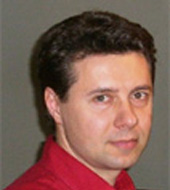Summary
Definition
History and exam
Key diagnostic factors
- excessive daytime sleepiness
- cataplexy
- hypnagogic/hypnopompic hallucinations
- sleep paralysis
Other diagnostic factors
- chronic fatigue or tiredness
- poor performance at work
- poor memory and concentration
- car accidents
- slurred speech
- blurred vision
- irregular breathing pattern
- sleep attacks
- fragmented nocturnal sleep
- symptoms of other sleep disorders
- obesity
- status cataplecticus
- hepatomegaly
- paresis
Risk factors
- low cerebrospinal fluid hypocretin
- human leukocyte antigen (HLA)-DQB1*0602
- Prader-Willi syndrome
- Niemann-Pick disease type C
- linkage to 4p13-q21
- genes on chromosome 6 or chromosome 21
- hypothalamic tumors
- hypothalamic infarct/hemorrhage
- head trauma
- central nervous system infection
- central nervous system arteriovenous malformations
- multiple sclerosis
- myotonic dystrophy
Diagnostic investigations
1st investigations to order
- actigraphy and sleep diary
- overnight polysomnography
- multiple sleep latency test (MSLT)
Investigations to consider
- HLA typing
- cerebrospinal fluid hypocretin-1 level
- maintenance of wakefulness test
Treatment algorithm
adults with excessive daytime sleepiness (EDS)
adults with cataplexy
children with excessive daytime sleepiness (EDS)
children with cataplexy
Contributors
Authors
Octavian C. Ioachimescu, MD, PhD

Associate Professor
Emory University
Atlanta VA Medical Center
Atlanta
GA
Disclosures
OCI is an editor of a book cited in this topic.
Peer reviewers
Kumaraswamy Budur, MD
Medical Doctor
Sleep Disorders Center
Department of Psychiatry
Cleveland Clinic
Cleveland
OH
Disclosures
KB declares that he has no competing interests.
Seiji Nishino, MD, PhD
Associate Professor
Psychiatry and Behavioral Science
Stanford University School of Medicine
Stanford
CA
Disclosures
SN declares that he has no competing interests.
Kingman P. Strohl, MD, FCCP
Professor of Medicine
Director
Center for Sleep Disorders Research
Professor of Anatomy
Department of Medicine
Case Western Reserve University
Cleveland
OH
Disclosures
KPS declares that he has no competing interests.
Paul Reading, MBBS
Consultant Neurologist
James Cook University Hospital
Middlesbrough
UK
Disclosures
PR declares that he has no competing interests.
Peer reviewer acknowledgements
BMJ Best Practice topics are updated on a rolling basis in line with developments in evidence and guidance. The peer reviewers listed here have reviewed the content at least once during the history of the topic.
Disclosures
Peer reviewer affiliations and disclosures pertain to the time of the review.
References
Key articles
American Academy of Sleep Medicine. The AASM International classification of sleep disorders – third edition, text revision (ICSD-3-TR). Jun 2023 [internet publication].Full text
Smith MT, McCrae CS, Cheung J, et al. Use of actigraphy for the evaluation of sleep disorders and circadian rhythm sleep-wake disorders: an American Academy of Sleep Medicine clinical practice guideline. J Clin Sleep Med. 2018 Jul 15;14(7):1231-7.Full text Abstract
Maski K, Trotti LM, Kotagal S, et al. Treatment of central disorders of hypersomnolence: an American Academy of Sleep Medicine clinical practice guideline. J Clin Sleep Med. 2021 Sep 1;17(9):1881-93.Full text Abstract
Bassetti CLA, Kallweit U, Vignatelli L, et al. European guideline and expert statements on the management of narcolepsy in adults and children. Eur J Neurol. 2021 Sep;28(9):2815-30.Full text Abstract
Maski K, Trotti LM, Kotagal S, et al. Treatment of central disorders of hypersomnolence: an American Academy of Sleep Medicine systematic review, meta-analysis, and GRADE assessment. J Clin Sleep Med. 2021 Sep 1;17(9):1895-945.Full text Abstract
Reference articles
A full list of sources referenced in this topic is available to users with access to all of BMJ Best Practice.
Differentials
- Untreated sleep apnea
- Periodic limb movements of sleep
- Restless legs syndrome (RLS)
More DifferentialsGuidelines
- Recommended protocols for the multiple sleep latency test and maintenance of wakefulness test in children: guidance from the American Academy of Sleep Medicine
- The AASM manual for the scoring of sleep and associated events
More GuidelinesPatient information
Sleep apnea in adults (obstructive)
Insomnia
More Patient informationLog in or subscribe to access all of BMJ Best Practice
Use of this content is subject to our disclaimer